A dual monitor setup is a great way to increase your screen space and increase your productivity. Windows 10 comes with a feature known as “dual monitor” that allows you to add a monitor to the existing setup. Setting up a dual monitor is easy and takes only a few minutes. However, things may not always go as planned and you may encounter an error such as Windows 10 does not detect the second monitor.
If you are facing a similar issue, we’ve got you covered. Here we have discussed several solutions that can fix the issue and help you enjoy the dual monitor setup.
Before anything else
Before you jump to the solutions given below, here are some things you need to check.
- Confirm the 2nd monitor is connected to a power source and switched on
- Check the signal cable connection between 2nd monitor and your laptop or graphics card
- Use the monitor built-in controls to select the correct input signal
- Cold reboot the system to refresh the connection
If there is no improvement in the situation after the above checks, do the following:
- Remove the signal cable from both ends and reconnect it firmly
- Disconnect all peripherals from the computer like a USB mouse or keyboard to ensure there is no interference in the connection. You can connect them later once the connection is established
Solution One – Force 2nd Monitor detection
- Click Start ->Settings
- Click System-> Display
- Go to the “Multiple displays” section and click Detect button to connect to the monitor.
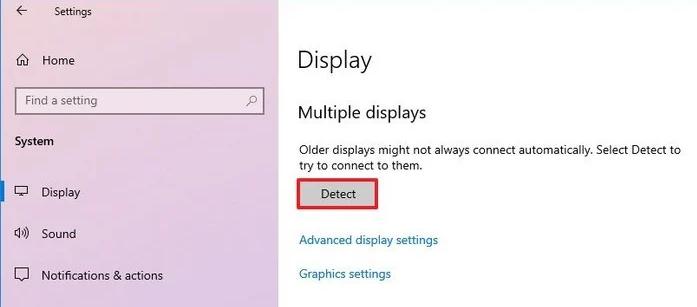
- Windows should now detect the 2nd monitor. After the 2nd monitor is detected, you can adjust the orientation and the resolution through Display Settings.
If the solution did not work for you, move to the next solution.
Solution Two – Rollback graphics driver
If you recently installed a driver update for the device after which Windows 10 stopped detecting the 2nd monitor, you need to roll back the graphics driver to resolve the 2nd monitor detection problem. Here are the steps to follow
- Click Start
- Type Device Manager in Cortana search
- Click Device Manager from the search results
- In the Device Manager window, double-click the Display adapters section to expand it
- Right-click graphics adapter and click Properties
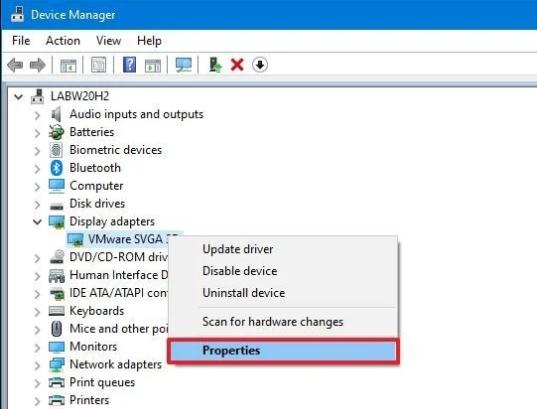
- In the Properties window, go to the Driver tab
- Click the Roll-back driver button
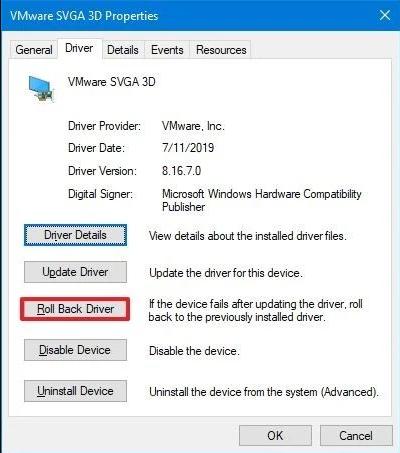
- Click OK
- Windows will ask you for reasons to roll back the driver. Click any one you feel appropriate or click For another reason
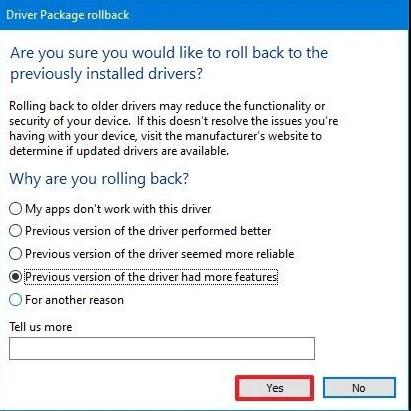
- Click Yes
- Windows will not roll-back graphics driver.
- Restart your computer
Check whether 2nd monitor is detected. If the problem persists, move to the next solution.
Solution Three – Update Graphics Driver
Many times the problem is related to the graphics driver. Updating the graphics driver can help resolve the issue. Here are the steps to update the graphics card driver.
- Open Settings app
- Click Update and Security
- Click Windows Update
- Click View optional updates
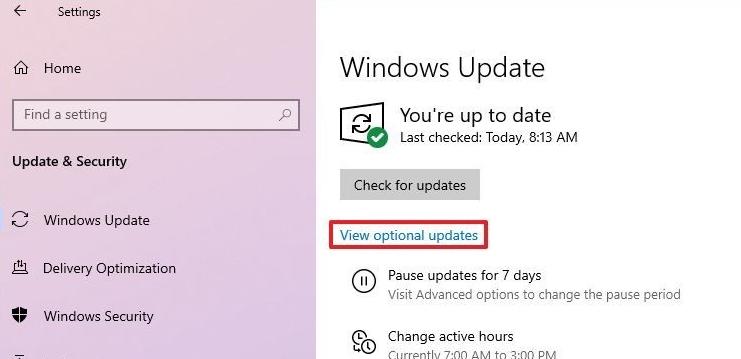
If the update option is not available, Windows is up to date. In that case, move to the next solution. If the view optional updates option is available, do the following
- Click Driver updates to expand the category.
- If a display driver update is available, place a tick in the corresponding box and click Download and install
Once you complete the above steps, Windows OS will download and install the driver. After the driver is installed, restart the system and repeat the steps given in Solution One.
You can also update the graphics driver automatically by using a Driver Update Tool.
Updating Drivers Automatically
Automatic driver update tools offer many benefits, the most important ones being:
- You can update device drivers automatically
- The software scans and updates all outdated or missing drivers at one go
- The tool picks the right drivers for your device and operating system, so you won’t have to worry about installing an incorrect driver by mistake
- Automatic driver updates are 100% safe
Driver Updater is one of the best driver update tools out there. Outbyte Driver Updater will give you access to a database of over 1 million drivers. It will regularly scan your PC, suggesting new driver versions to install. Driver Updater contains drivers for a variety of Windows devices. With just one click, you can update drivers in your system.
Step 1
Click here to Install and launch the app
Step 2
Scan all devices
Step 3
Install or update drivers automatically
If the problem persists even after you have updated the graphics driver, move to the next solution.
Solution Four – Make sure the monitor refresh rate is the same for both monitors
The monitor refresh rate refers to the number of times your screen refreshes in a second. Some graphics cards do not support different refresh rates in a dual monitor setup. You need to make sure the monitor refresh rate is the same for both monitors in your case. Here are the steps to follow.
- Open Settings
- In the Settings window, click System

- In the System window, click Display in the left column
- On the right side under the Display section, Click Advanced Display settings
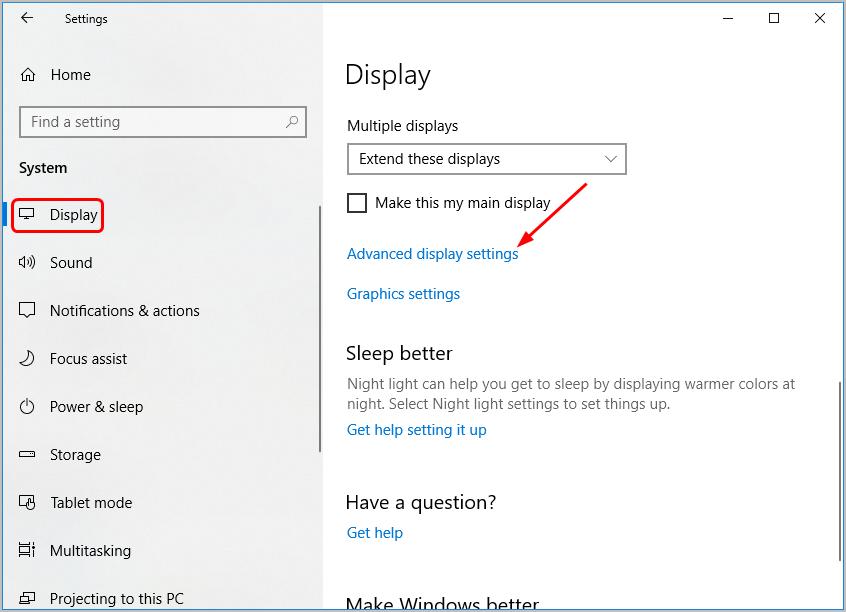
- Check the refresh rate for both monitors. If the refresh rates of both monitors are the same, move to the next solution
- If the refresh rates are different for both monitors, follow the steps given below.
- Click Display adapter properties for Display 1
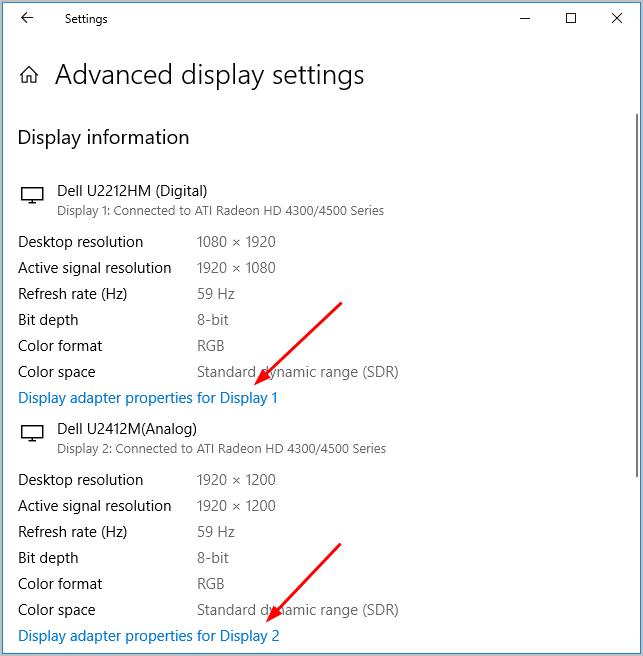
- In the Properties window that pops up, go to the Monitor tab
- Under Monitor settings, Select 59 Hz or any other display frequency from the drop-down list
- Click Apply -> OK
- Now click Display adapter properties for Display 2
- In the Properties window. Click Monitor tab
- Under Monitor settings, Select 59 Hz or any other display frequency from the drop-down list. Make sure the refresh rate is the same for both monitors
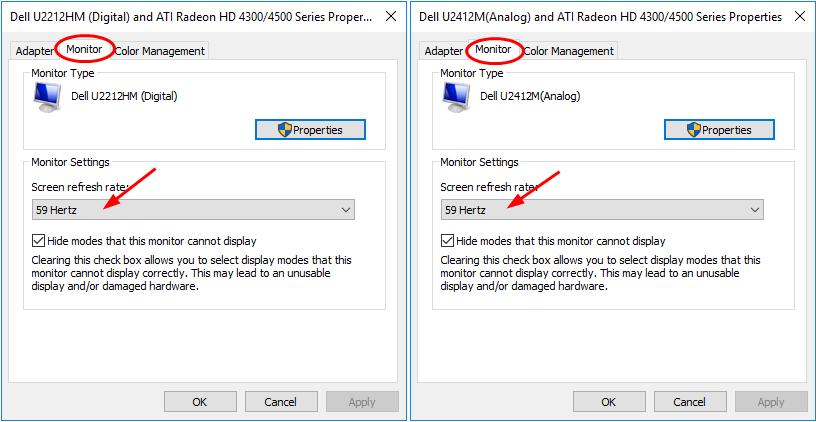
- Click Apply-> OK
Now check whether Windows 10 detects the second monitor. If the issue persists, move to the next solution.
Solution Five – Change Project Mode
Windows 10 features a project mode where the user can project the display of the Windows 10 screen on another screen. There is a possibility wrong project mode is selected which is causing problems in the detection of the second monitor. Here are the steps to change project mode.
- Press the key combination- Windows + P on the keyboard
- Select Extend if you want to increase your desktop space. Select Duplicate if you want to mirror your Windows screen on the second monitor
Hopefully one of the solutions solves the Windows 10 does not detect a second monitor issue for you.

Leave a Reply